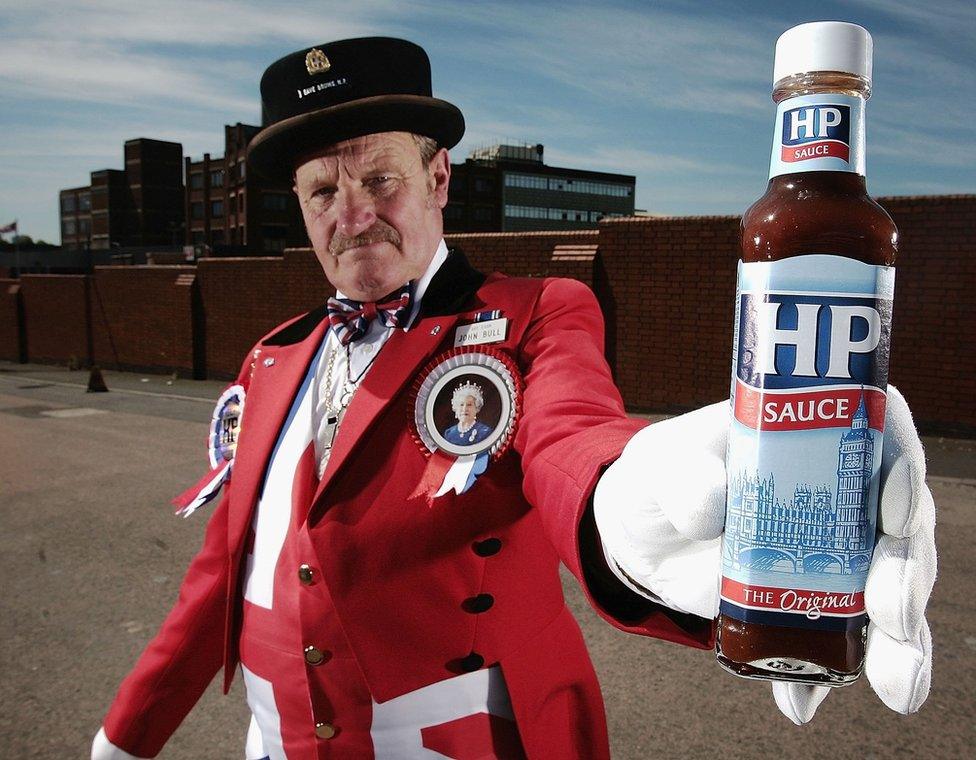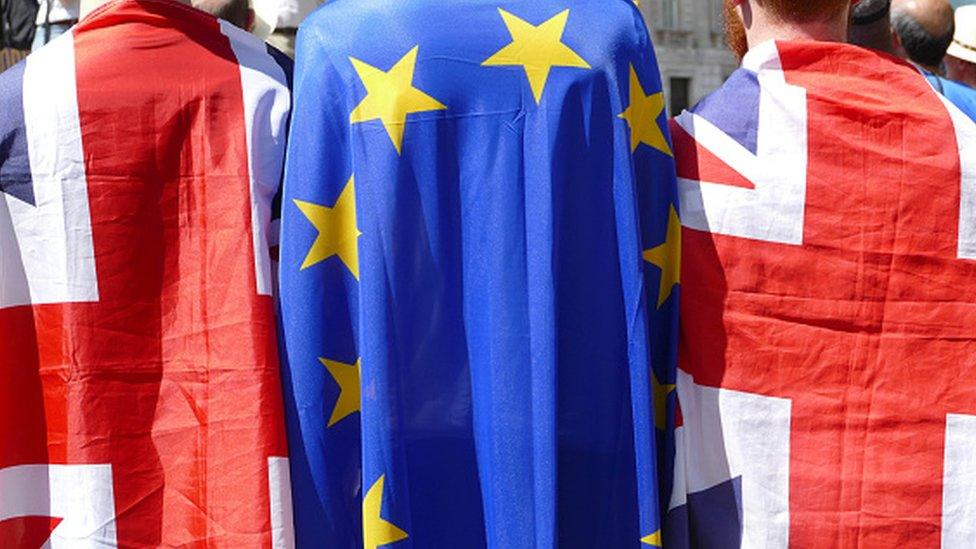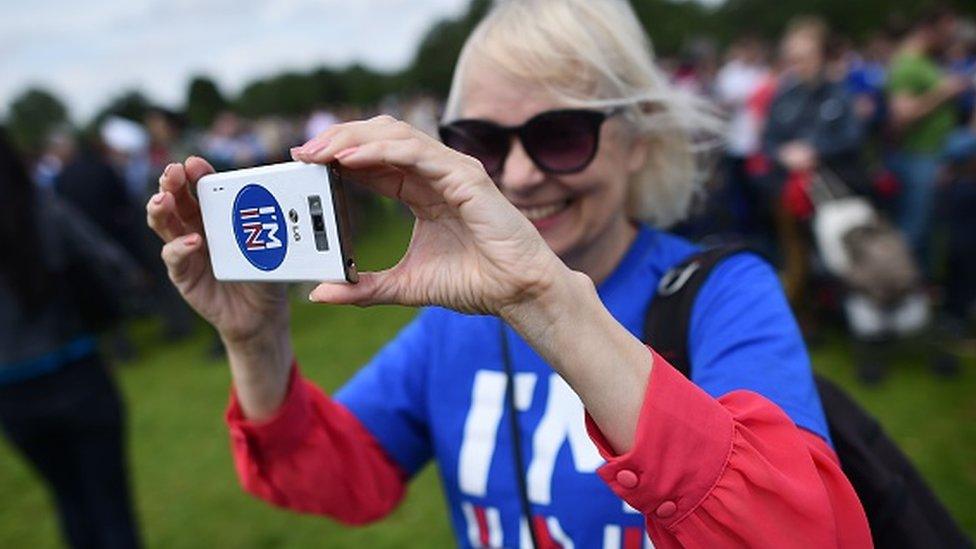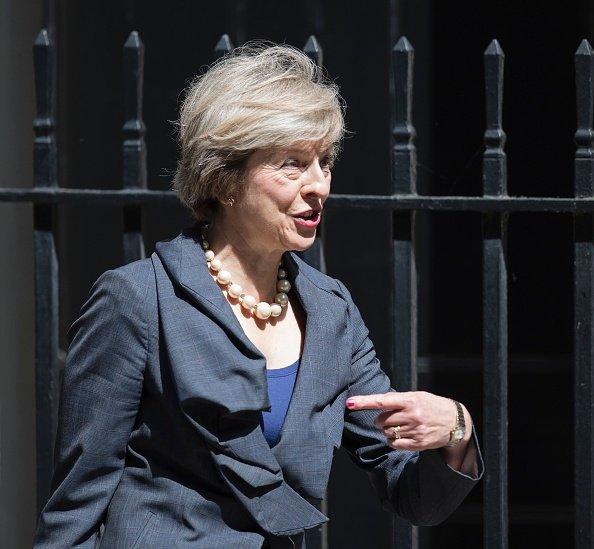Do your favourite brands show how divided Brexit Britain is?
- Published

Could the brands you like reveal the way you are likely to vote?
That's one of the intriguing questions thrown up by a new analysis of the consumer preferences of tens of thousands of Brexit and Remain voters.
In the last few weeks ranks of political experts have attempted to map and explain the divisions in British society exposed by the referendum vote to leave the European Union. A broad range of factors have been pondered over, including class, location and income.
Now another perspective has come from the world of advertising, and based on research into the brands which are the most liked or used by Brexiters and Remainers. It suggests there are other profound cultural differences between the two sides beyond their attitude to the EU.
Researchers looked at the data gathered by the polling organisation YouGov and have drawn up lists of the brands which are most highly regarded or used by Leave and Remain voters. The resulting Top 10 lists of brands most favoured by each set of voters were revealed in an article, external in the advertising trade paper Campaign.

The article's author, Emily James, Chief Strategy Officer of the RKCR/Y&R agency, told BBC Trending what inspired the exercise: "I read a few interesting articles suggesting the referendum result went beyond basic demographics or politics. And in that way it was different from past elections. I also saw in people I knew a deeper reason for how they voted. It was more about a mindset than any political view or belief. I believe you can tell a lot about people from the brands they choose, so I decided to investigate on a macro basis."
The raw data for this came from the tens of thousands of people whose opinions on a range of subjects - including their response to around 1,200 brands - are closely tracked by YouGov on an ongoing basis. Since the referendum around 108,000 of those individuals have also been asked how they voted. The preferences of those who abstained in the referendum were not analysed.
"We were able to cross reference the consumer preferences of more than 100,000 people, which we were already following, with how those people said they voted in the referendum," says YouGov Associate Director, Holly Travis. "There are many shops and brands which most people use. But the brands on the top 10 lists are the brands which are most indicative of how people voted. These are the brands with which the two sets of voters, Brexit and Remain, have the greatest affinity."
Top 10 brands: Leave voters
HP Sauce
Bisto
ITV News
The Health Lottery
Birds Eye
Iceland
Sky News
Cathedral City
PG Tips
Richmond sausages
Top 10 brands: Remain voters
BBC.co.uk
BBC iPlayer
Instagram
London Underground
Spotify
Airbnb
LinkedIn
Virgin Trains
Twitter
EasyJet
James says that the brand lists lend weight to the view that there is a deep difference of cultural identity between the two sides.
"The factors that explain these brand choices are complex and demographics such as age and income play a key role. But even accounting for these factors, by comparing brand choices of voters in the same demographic group, we see the same pattern emerge. For example, the brand choices of Leave and Remain voters in the 18-34 age bracket look remarkably similar to the list above with at least three brands on each side in the top 10," James wrote.
She sees the brands in the lists as embodying starkly different sets of characteristics.
Leave Brands more likely to be seen as:
traditional, straightforward, simple, down-to-earth, good value and friendly
Remain Brands more likely to be seen as:
progressive, up-to-date, visionary, innovative, socially responsible, intelligent
While such brand profile studies are common in advertising, what does a more conventional political pundit make of it all? The psephologist John Curtice, professor of politics at the University of Strathclyde, told BBC Trending he was not surprised by the results.
"This piece of analysis reveals a division between Old Britain vs New Britain, of an older, traditional more working class Britain vs a younger more digitally connected, more internationally facing generation."

"If you look at a bottle of HP sauce you see an image of the Houses of Parliament in Westminster; an iconic brand representing a powerful image of British democracy. Bisto and Richmond sausages are traditional English brands representing homely England. Tea also had to be on that list!
"Those who voted Leave are inclined to prefer a culture that is distinctively British and in which they and their friends grew up. It feels familiar and comfortable to them."
Professor Curtice added that the brand choices from the Remain camp were just as indicative of the "much more digitally connected, younger and highly educated demographic" that supplied the core of support for the EU.
"This is made clear in their choice of brands such as Spotify, social media sites such as Instagram and Twitter, and professional online sites such as LinkedIn," he said. "The BBC website is one of the most visited news websites in the UK which stresses the digital outlook of this group, many of whom probably do not buy newspapers regularly."
"It's also not surprising that they like to travel and explore - albeit with a budget airline as their incomes are often quite stretched - just what you would expect of a group of predominantly younger people who are used to being to travelling freely to Europe (and beyond).
"This piece of analysis reveals just how sharp is the cultural divide between the Remain and Leave and I'm not sure that the divide will be very easy to bridge."
So does the research provide any pointers to how a new prime minister could make Britain a little less disunited?

Is there anything Theresa May could learn from TK Maxx?
James believes so: "Examining people's brand choices on each side of our divided nation can shed light on what might speak to the values close to the heart of each group. So, for a government to genuinely bridge the cultural divide that runs so deep in our country, it might seek inspiration from the brands that already cross this chasm successfully."
She says that according to the YouGov data, there are several brands who appeal equally to the Leave and Remain sides. They include Money Saving Expert, NSPCC, TK Maxx and M&S. It might not seem obvious what lessons there are for the Cabinet in that disparate group of brands.
"They are all examples of brands that champion something of importance to a wide range of people - whether it is "being savvy", protecting those who are vulnerable, or getting good quality at great prices," James says.
"If the Government manages to set out a progressive, visionary and intelligent strategy, but deliver it in a simple, straightforward and down to earth manner, then maybe it really could be on the way to building One Nation Britain."
Blog by Megha Mohan, external & Ed Main
NEXT STORY: Rio 2016: The priceless faces lighting up the Olympics

You can follow BBC Trending on Twitter @BBCtrending, external, and find us on Facebook, external. All our stories are at bbc.com/trending.